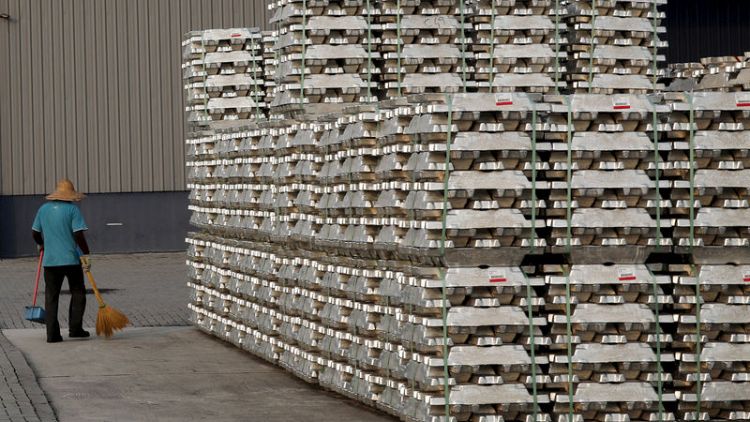By Pratima Desai
LONDON (Reuters) - The London Metal Exchange will allow warehouses in its network to extend queues for loading out metal, and will require them to report stocks stored outside the LME system that could be brought in at a later date, it said on Friday.
The changes come after a consultation with market participants that ran from July until September.
Current rules governing queues were introduced after waiting times to take aluminium out of LME-registered warehouses in Vlissingen soared to two years and in Detroit to 700 calendar days in 2014, sparking consumer complaints.
They include queue-based rent capping (QBRC) that stipulates full rent is payable by those awaiting delivery for 30 days, half rent for 20 days and no rent after 50 days. The LME will change that to full rent for 80 days and no rent thereafter.
The first stage will be a move to 50 days of full rent payable in February next year, followed by 60 days in May, 70 days in August and 80 days in November 2020.
"Our warehouse operators tell us (current rules) are restrictive. Their ability to pay competitive incentives is limited and so the metal goes to private storage," said LME chief executive Matt Chamberlain at a briefing.
Incentives are paid per tonne of metal going on LME warrant and are calculated using free-on-truck (FOT) rates, a payment made to warehouses to prepare metal for transport, and the rent that could be earned.
Some respondents in the consultation preferred the option of cutting rent and FOT charges as a means of attracting metal to LME warrant.
"The LME notes the risk involved in following this route given it may still not be able to compete with private storage charges," the exchange said.
"Nevertheless the LME does intend to freeze rent and FOT rates until 2027-2028 to ensure no further widening occurs between LME and non-LME storage costs."
Sources say storage charges for off-warrant metal - that stored in warehouses outside the LME network - are typically below 10 U.S. cents a tonne. In contrast rent for aluminium under LME warrant could be more than 50 cents a tonne.
On the reporting of inventories, the exchange said it has a duty to address concerns around stock transparency and the right to compel market participants to report stock levels where commercial agreements reference the LME.
"The LME acknowledges that some stock may not be reportable by virtue of its storage agreement," it said. "The LME will work with the market to incentivise the voluntary reporting of off-warrant stocks."
Chamberlain said penalties for not reporting metal that eventually ends up under LME warrant would have to be significant and take into account the financial gains for the metal owner.
"It's not something we've tried to quantify yet, (but) you want a significant impact otherwise people can just not report, wait for a backwardated market, deliver and still make a good profit," he said.
Metal owners typically put metal on LME warrant when there is a premium or backwardation for the cash over the three-month contract.
The exchange said it would not publish the off-warrant stocks data until it was satisfied that transparency would be enhanced.
(Reporting by Pratima Desai; editing by Jason Neely)



